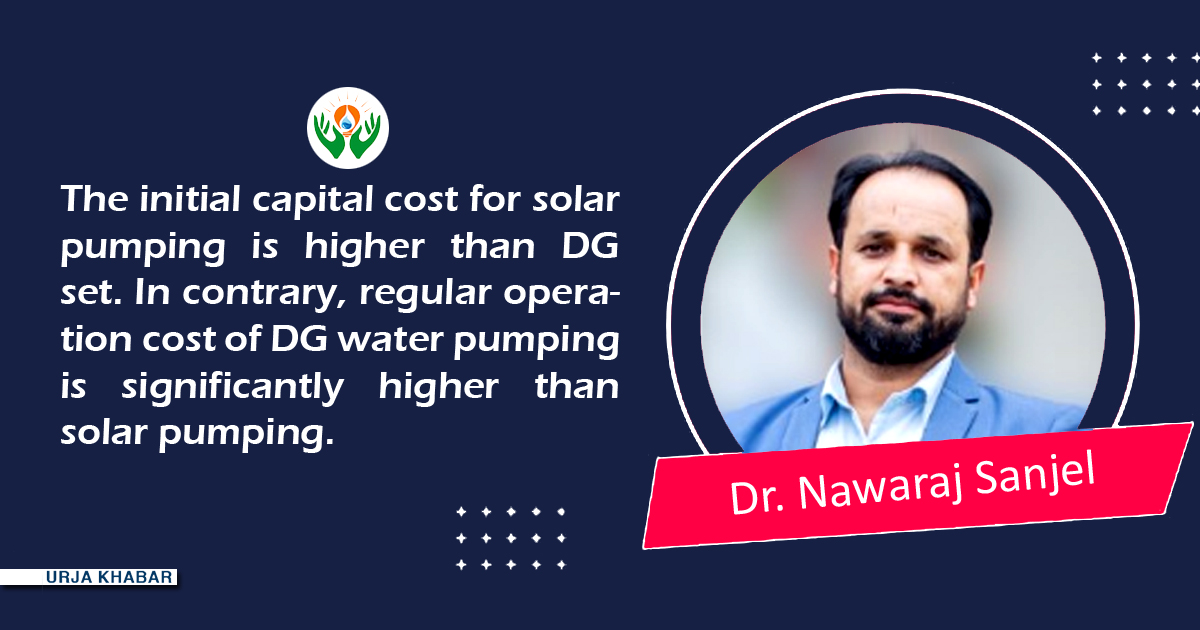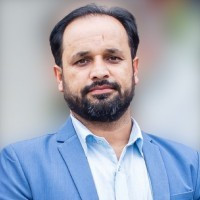
According to the World Bank, arable land of Nepal is dwindling from 29.7% (2001) to 28.7 % (2020). Rapid urbanization and foreseeable climate change are some of the most inevitable causes for the increasing shrinkage. Most of the arable land lies in Tarai region with good access to electricity and irrigation canals. However, the case is tougher in mountainous areas; limited electricity access, weak distribution network coupled with the difficult geographic terrain for irrigation canals are the major reasons behind setbacks on access to enough water, could be for drinking and/or irrigation.
Even in Tarai region, the situation is not an ease as portrayed. Despite 100 % of electricity access in Tarai as claimed by Nepal Electricity Authority (NEA), pragmatical reach to each of the irrigation requiring land is still a challenge. Regions with limited access to electricity is another obvious story for the issue. As a result, either significant fallow land is seen, or diesel generator (DG) based water pumping are adopted. No such farms can be envisioned without DG backup for irrigation. In specific areas, solar water pumping is one of the promising technologies. However, the initial capital cost for solar pumping is higher than DG set. In contrary, regular operation cost of DG water pumping is significantly higher than solar pumping. Given the access to grid electricity, AC water pumping is the most economic option.

Alternative Energy Promotion Centre (AEPC) provides subsidy up to NRs 2 million (not exceeding of 60% of the total project cost) on solar water pumping (for irrigation). Additionally, numerous other subsidies are available for water pumping for drinking water supply depending upon access to national grid. The subsidy scheme is very helpful for the needy farmers and the community depending upon their requirements for irrigation of drinking water supply. AEPC extends a subsidy provision for solar water pumping up to 2kWp system.
The marginally viable projects are also supported by Sustainable Energy Challenge Fund (SECF), a financial instrument being implemented by AEPC/CREF (Central Renewable Energy Fund). SECF conceptualizes and implements the bottom-up approach for the adoption of solar water pumping led by private sector. This signifies the dynamic approach of AEPC over the subsidy approach and contributes in making the market sustainable. Evidently, Nepal Renewable Energy Programme (NREP), one of the programmes implemented by AEPC, is a pioneer in supporting the market-based approach for carrying further solar water pumping ensuring the economic water supply, especially to the areas with limited grid access. SECF has awarded a project to a micro-finance on Promoting Productive Energy Use from Solar Irrigation Pump with credit financing facilities to promote agricultural enterprises by installing Solar Irrigation Pump systems in all the eight districts of Madesh Province.

Basically, the micro-finance focuses on development of varieties of promotional materials, orientation and awareness among needy farmers, edify them about benefits of the systems. Parallelly, they develop necessary market actors such as repair and maintenance trainings, develop various insurance schemes for farmers, design and deliver technical trainings on crop diversification and effective use of solar water pumps etc. This way the micro-finance tends to ensure all the enabling environments in place and intensify the yield of agricultural products. To ensure sustainability, the model is implemented based on demand placed by farmers itself. Moreover, the micro-finance contributes on proper match making between farmers and the installer companies. Additionally, the microfinance extends credit financing for adoption of the system. This way, the demand driven (market-based) approach is moving towards sustainable uptake of solar water pumping systems with multiple benefits. In this instance, implementation of the model is led by micro-finance; however, any private entity may lead the sustainable model.
Evidence based learning
As of now, although the aggregated data of solar pump installation could not be consolidated, it is undeniable that the numerous such sets have already been installed by AEPC, development programmes and the private sectors. The early adopters find the system far beneficial comparative to the DG pumping. The system has no hassle for fuel issues (commutation to buy diesel, issue with irregular price hike and shortage in many times and the system break downs), instant system installation by service providers, hassle-free credit financing provisioned by the microfinance are the major attractions of the system. Foggy weather is the major issue. Thus, the farmers are reluctant and not sure, if they can fully rely on solar pumping for irrigation. However, many times, the early adopters have good opportunity to irrigate neighbours’ land at reasonable tariff, which also helps them to make extra income and reach the break-even earlier. Additionally, the abundant water supply with no extra cost, farmers can grow multiple crops. The intervention has directly supported the women and the local livelihood.
The bottom up approach requires the necessity of ownership feelings for sustainable uptake of the system. Rather than the product subsidy, the modality encourages the private sector investments adding up the local job creations and thus contributing to the local livelihood. Developing a market is a slow but impactful change is inevitable.
Opportunities and challenges
At larger scale, there are numerous opportunities and the unavoidable challenges as well. Once the installation is done, the system provides free (almost) water supply with very minimal (almost zero) maintenance for at least next 20-25 years for solar system and nearly 2-3 years for the pump. Considering the intermittent water requirements for irrigation, the system becomes underutilized resulting in loss of energy. Thus, grid integration of such systems net metered with NEA to inject the surplus energy would be a great model. The system will share the national load demand. This way, national generation is heightened, and the energy-mix is contributed. To meet the Nationally Determined Contributions (NDC) of a 15 % of energy mix, Nepal needs to diversify the energy sources, solar could be one. Grid connected solar pumping could be an ideal. For wider uptake, viability gap funding (VGF) need to be revised in case if it is to compete with national grid electricity; suitable for long term impact. Awareness at farmers’ level and credit financing issue which is even at peak for the time being are the major challenges.However, climatic conditions at specific sites, high-upfront cost and loan (risk) taking capability could be among other challenges for wider uptake.
Despite nearly 98% of electricity access, there is need of solar pumping due to lack of reliable national grid. Market model (bottom up approach) for energy system uptake would be a milestone in the field of Distributed Renewable Energy (DRE). This will increase the yield of agriculture products contributing to minimize the trade gap. In Nepal, females being engaged in agricultural activities and the daily household chores, this will also contribute the transition of women towards the financial independence leading to decisive roles in societies. The short term supports through various modalities may be available for certain duration of the system uptake. The farmers may abandon the system once it breaks down. Thus, the market based (demand driven) approach and the potentially increased income through energy sales to the grid would be pivotal for the sustainability. Additionally, the time span for the expected potential e-waste from such systems can be delayed.
Subsidy model may be mandatory in some cases for marginal communities, however, market-based approach is the only way forward for the sustainable and wider uptake of DRE. In the federalized context, numerous local and provincial governments are unaware about such systems. So, plentiful capacity building and awareness interventions would lead to the development of projects on public private partnerships as well and the wider uptake.
Dr. Sanjel holds a Ph.D. in Energy Planning and is energy professional for last one and half decade.
